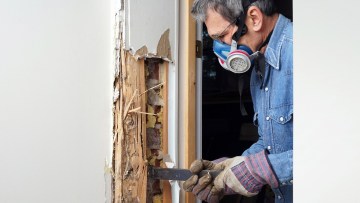Public and Educational Buildings
There are many challenges associated with preventing pests from interrupting the smooth running of public institutions, because of health concerns or damage to the premises. An integrated pest management strategy based on BASF treatment solutions helps protect members of the public and staff.
Usual issues

Multiple environments
Schools, universities, town halls, government offices, prisons and other public buildings pose particular challenges in terms of effective pest control. They usually occupy a large area and are often spread across a number of different buildings. They also offer a wide range of premises: school rooms, office space, public areas, dining halls, sports facilities and, in some cases, accommodation too. In other words, public buildings offer pests multiple points of entry to the various facilities and also provide them with ample sources of food, water and shelter.
Safety, hygiene and comfort
Public buildings should be clean, safe and welcoming places for everyone. Unfortunately, the practicalities of preventing pests from accessing premises and facilities can be quite complicated in large multi-faceted sites. And the thousands of people who enter public buildings every day can also contribute to the problem, by introducing pests without realising it.
Impact / risks
Adults and children at risk from pests
The health risks associated with pests are well known. They include allergic reactions to bites, food poisoning and a range of other, sometimes serious, diseases transmitted by rodents and insects. However, these health risks become more serious for young children, older people and those who have a compromised immune system. Protecting the more vulnerable members of a community is a vital aspect of any pest management programme.
A drain on public funds

Budget control is a key priority for government departments and local authorities. And yet, insufficient attention to a well-designed and properly implemented pest management strategy can generate significant expenditure when remedial action is required.
Examples of costs incurred by pest damage include:
- furniture, skirting boards, pipes and other fixtures damaged by rodents, and requiring repair or replacement
- electrical equipment failure or even fire damage – commonly caused by rodents stripping insulation from electrical wires
- depletion of food stocks in buildings with a dining hall, due to contamination by flies, cockroaches and rodents
- litigation costs following a complaint from a member of the public.
Legislation
Because public buildings serve a multitude of different purposes, facilities managers need to ensure that maintenance and cleaning programmes comply with all the relevant legislation relating to their premises and facilities. Among these feature the legal obligation to provide a safe and healthy workplace and to ensure that food hygiene rules are observed.
Commonly found pests such as rats, mice, ants, bedbugs, cockroaches and flies all pose significant health hazards. An uncontrolled pest infestation represents a serious breach of regulations, and can ultimately lead to premises or facilities being closed down.
Benefits to use BASF products
Prevention, proofing and treatment
Pest control operators contracted to work in sensitive areas such as schools implement a range of prevention and proofing measures. However, when an infestation does occur, trained professionals need to use products they can rely on to provide fast and complete relief from pests. For many pest controllers, BASF rodenticides and insecticides are key tools for the effective control of serious infestations.
Integrated pest management
Facilities managers in complex and large sites that host a large number of people know that pest management is an essential element of the overall maintenance and sanitation strategy. BASF pest control solutions offer a high level of efficacy, even at low doses , which is especially important in sensitive environments. Combined with prevention and monitoring procedures, they help facilities management teams keep on top of any emerging pest problems.


